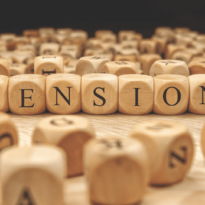Some studies suggest that less than 25% of people follow through their new year’s resolutions but what about tax year resolutions? asks the Prudential’s technical team.
For financial advisers the end of the tax year is often the most stressful period of the year. On 6 April 2019 you may have promised yourself to be more organised in the run up to 5 April 2020. Congratulations to those who have achieved their tax year resolutions but if you are part of the majority then don’t stress yet, there is still time!
When it comes to tax year end pension contributions the annual allowance (AA) rules are a key factor in determining the level of contribution but establishing a client’s AA position can be complex and time consuming. However, there are some things you can to make this process easier but before we look at these let’s start with a summary of what you need to know.
Whilst the AA rules apply to the member only, it’s not simply their contributions that use AA. Contributions by third parties and employers also use up the clients AA.
PIAs in 2019/20 will be tested against the standard AA of £40,000 unless the member is subject to a Tapered AA or Money Purchase AA (MPAA). If the total PIAs exceed the clients standard AA or tapered AA (see below for MPAA) then an AA charge will apply to the excess amount which will be taxed at their marginal rate unless they have unused AA available to carry forward to absorb the total PIA.
Carry forward allows those who use up the AA in any particular tax year to carry forward unused allowance from the previous three tax years so long they were a member of, a registered pension scheme in the tax year they want to carry forward from. Ke ep in mind that its AA, not relevant earnings, that can be carried forward as this is often misunderstood. You can read more about the interaction of tax relief and AA here.
Those who have triggered the MPAA cannot carry forward to increase the MPAA limit for post trigger date defined contributions in any tax year. However, carry forward can still be used where the tapered AA applies for any tax year on or after 2016/17.
The AA rules are quite complex and we cover them in more detail in our Pruadviser knowledge library. I would recommend reading the following articles.
Pension annual allowance & charges explained
Pension annual allowance carry forward explained
Tapered annual allowance – threshold and adjusted income
What is the Money Purchase Annual Allowance – everything you need to know
So now we have touched on the rules, here are some things to think about when considering end of tax year pension contributions in relation to the AA rules.
Carry forward – use it or lose it!
Unused AA from 2016/17 will lost if not swept up in 2019/20. To establish the unused AA from 2016/17 you need to establish the PIAs from all sources for 2016/17. However, it’s possible that unused AA from 2016/17 could have been used by a PIA in the 2017/18 or 2018/19 tax year so it’s important not to look solely at 2016/17. Carry forward calculations are relatively simple if you have the PIAs. It’s how the PIAs are obtained that can lead to delays and confusion.
The best way to obtain the PIAs is to obtain a Pensions Savings statement (PSS) from the clients pension schemes. This will confirm the PIAs and the correct tax year these relate to, which is the information needed for carry forward calculations. If you request a 2018/2019 PSS it will confirm the total PIAs 2018/19 and the previous three tax years.
Some clients may have a mixture of money purchase (MP) and defined benefits (DB) schemes, so requesting a PSS from all schemes is key. This is more efficient than trawling through MP contribution histories or manually calculating the PIA for a DB scheme. Once you have this information it’s simply a case of adding the PIAs together (if the client has more than one scheme).
You can read more about PSSs in HMRCs Pensions Tax Manual.
If you want to be organised for end of tax year carry forward planning then ideally you should be contacting clients now and asking them to request a PSS from their pension schemes.
Carry forward – future planning & case study
(cont over page)
Page: 1 2





























